Aditya Kalyanpur
Multi-step Inference over Unstructured Data
Jul 08, 2024



Abstract:The advent of Large Language Models (LLMs) and Generative AI has revolutionized natural language applications across various domains. However, high-stakes decision-making tasks in fields such as medical, legal and finance require a level of precision, comprehensiveness, and logical consistency that pure LLM or Retrieval-Augmented-Generation (RAG) approaches often fail to deliver. At Elemental Cognition (EC), we have developed a neuro-symbolic AI platform to tackle these problems. The platform integrates fine-tuned LLMs for knowledge extraction and alignment with a robust symbolic reasoning engine for logical inference, planning and interactive constraint solving. We describe Cora, a Collaborative Research Assistant built on this platform, that is designed to perform complex research and discovery tasks in high-stakes domains. This paper discusses the multi-step inference challenges inherent in such domains, critiques the limitations of existing LLM-based methods, and demonstrates how Cora's neuro-symbolic approach effectively addresses these issues. We provide an overview of the system architecture, key algorithms for knowledge extraction and formal reasoning, and present preliminary evaluation results that highlight Cora's superior performance compared to well-known LLM and RAG baselines.
Multi-step Knowledge Retrieval and Inference over Unstructured Data
Jun 26, 2024



Abstract:The advent of Large Language Models (LLMs) and Generative AI has revolutionized natural language applications across various domains. However, high-stakes decision-making tasks in fields such as medical, legal and finance require a level of precision, comprehensiveness, and logical consistency that pure LLM or Retrieval-Augmented-Generation (RAG) approaches often fail to deliver. At Elemental Cognition (EC), we have developed a neuro-symbolic AI platform to tackle these problems. The platform integrates fine-tuned LLMs for knowledge extraction and alignment with a robust symbolic reasoning engine for logical inference, planning and interactive constraint solving. We describe Cora, a Collaborative Research Assistant built on this platform, that is designed to perform complex research and discovery tasks in high-stakes domains. This paper discusses the multi-step inference challenges inherent in such domains, critiques the limitations of existing LLM-based methods, and demonstrates how Cora's neuro-symbolic approach effectively addresses these issues. We provide an overview of the system architecture, key algorithms for knowledge extraction and formal reasoning, and present preliminary evaluation results that highlight Cora's superior performance compared to well-known LLM and RAG baselines.
LLM-ARC: Enhancing LLMs with an Automated Reasoning Critic
Jun 25, 2024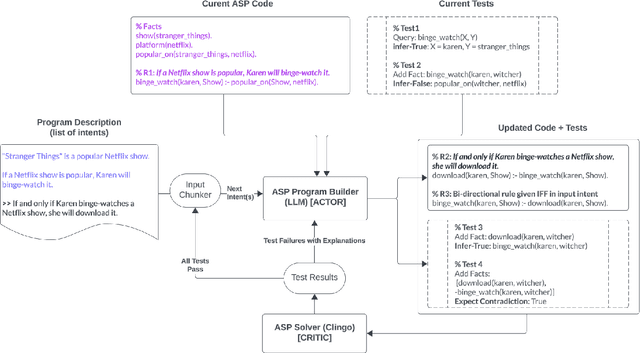
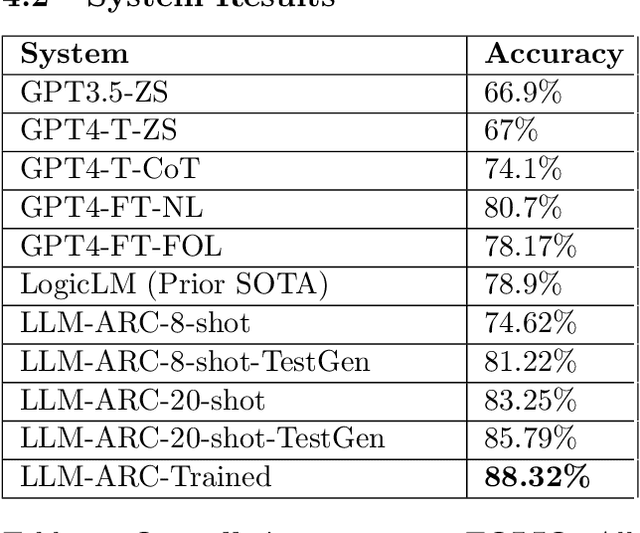
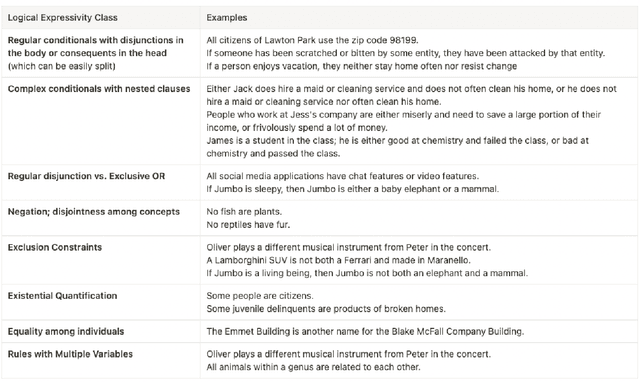

Abstract:We introduce LLM-ARC, a neuro-symbolic framework designed to enhance the logical reasoning capabilities of Large Language Models (LLMs), by combining them with an Automated Reasoning Critic (ARC). LLM-ARC employs an Actor-Critic method where the LLM Actor generates declarative logic programs along with tests for semantic correctness, while the Automated Reasoning Critic evaluates the code, runs the tests and provides feedback on test failures for iterative refinement. Implemented using Answer Set Programming (ASP), LLM-ARC achieves a new state-of-the-art accuracy of 88.32% on the FOLIO benchmark which tests complex logical reasoning capabilities. Our experiments demonstrate significant improvements over LLM-only baselines, highlighting the importance of logic test generation and iterative self-refinement. We achieve our best result using a fully automated self-supervised training loop where the Actor is trained on end-to-end dialog traces with Critic feedback. We discuss potential enhancements and provide a detailed error analysis, showcasing the robustness and efficacy of LLM-ARC for complex natural language reasoning tasks.
Braid: Weaving Symbolic and Neural Knowledge into Coherent Logical Explanations
Dec 11, 2020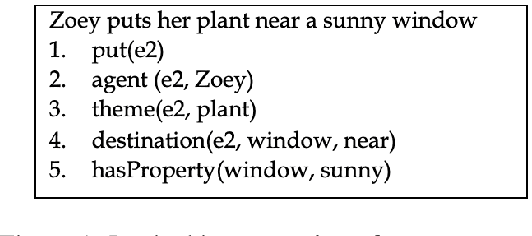
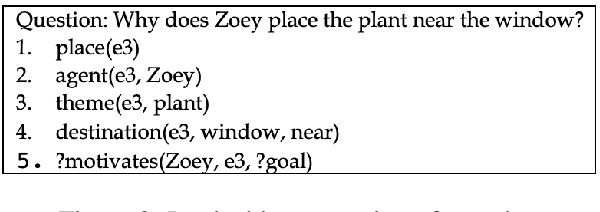
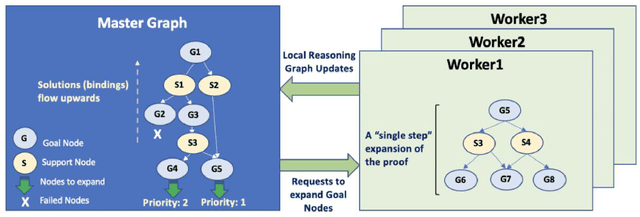
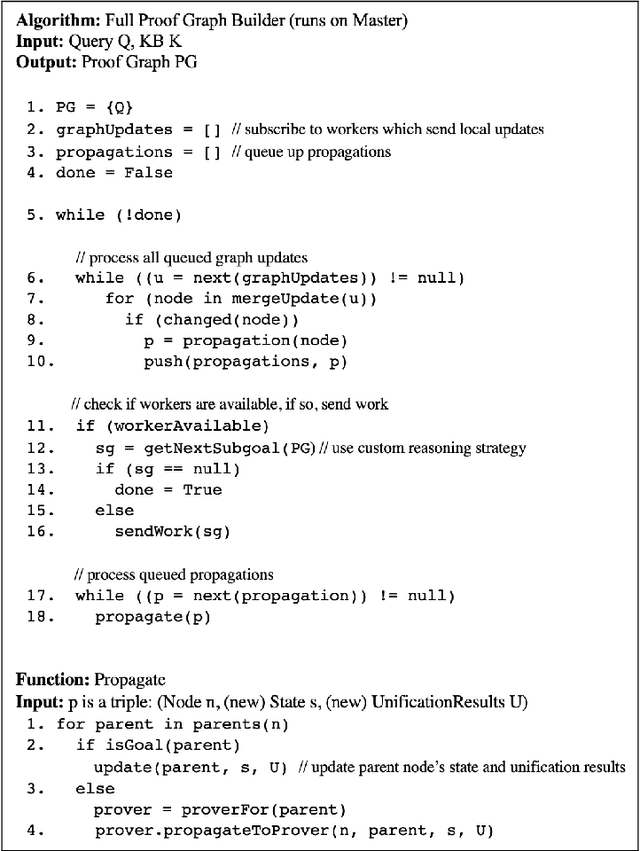
Abstract:Traditional symbolic reasoning engines, while attractive for their precision and explicability, have a few major drawbacks: the use of brittle inference procedures that rely on exact matching (unification) of logical terms, an inability to deal with uncertainty, and the need for a precompiled rule-base of knowledge (the "knowledge acquisition" problem). These issues are particularly severe for the Natural Language Understanding (NLU) task, where we often use implicit background knowledge to understand and reason about text, resort to fuzzy alignment of concepts and relations during reasoning, and constantly deal with ambiguity in representations. To address these issues, we devise a novel FOL-based reasoner, called Braid, that supports probabilistic rules, and uses the notion of custom unification functions and dynamic rule generation to overcome the brittle matching and knowledge-gap problem prevalent in traditional reasoners. In this paper, we describe the reasoning algorithms used in Braid-BC (the backchaining component of Braid), and their implementation in a distributed task-based framework that builds proof/explanation graphs for an input query in a scalable manner. We use a simple QA example from a children's story to motivate Braid-BC's design and explain how the various components work together to produce a coherent logical explanation.
Open-Domain Frame Semantic Parsing Using Transformers
Oct 23, 2020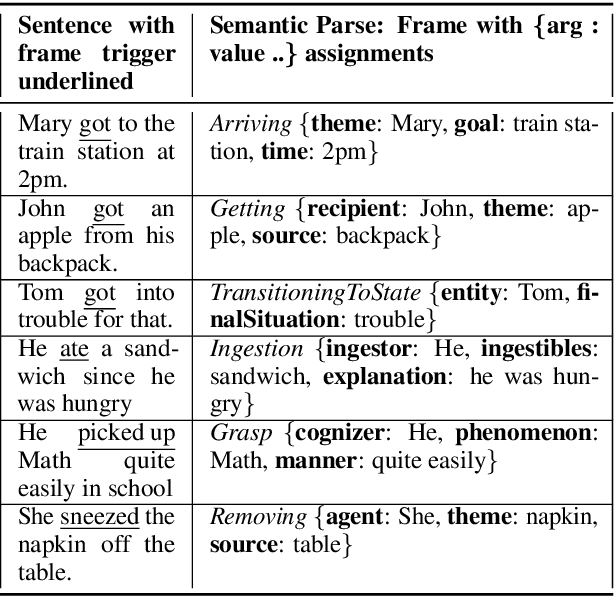
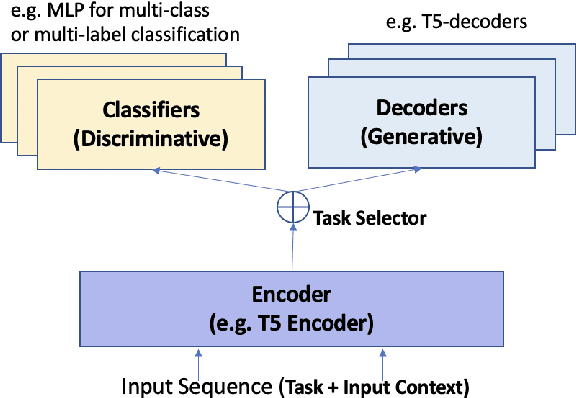
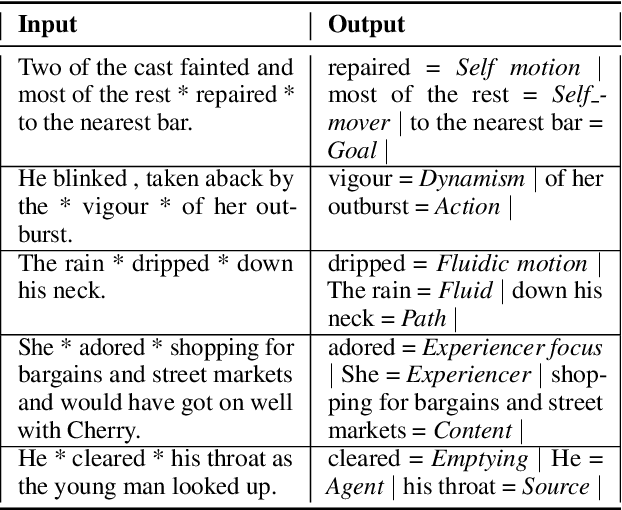
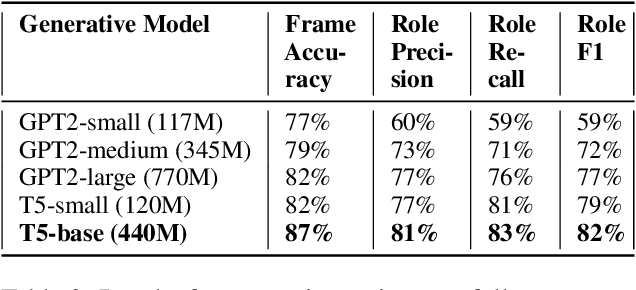
Abstract:Frame semantic parsing is a complex problem which includes multiple underlying subtasks. Recent approaches have employed joint learning of subtasks (such as predicate and argument detection), and multi-task learning of related tasks (such as syntactic and semantic parsing). In this paper, we explore multi-task learning of all subtasks with transformer-based models. We show that a purely generative encoder-decoder architecture handily beats the previous state of the art in FrameNet 1.7 parsing, and that a mixed decoding multi-task approach achieves even better performance. Finally, we show that the multi-task model also outperforms recent state of the art systems for PropBank SRL parsing on the CoNLL 2012 benchmark.
SKATE: A Natural Language Interface for Encoding Structured Knowledge
Oct 20, 2020



Abstract:In Natural Language (NL) applications, there is often a mismatch between what the NL interface is capable of interpreting and what a lay user knows how to express. This work describes a novel natural language interface that reduces this mismatch by refining natural language input through successive, automatically generated semi-structured templates. In this paper we describe how our approach, called SKATE, uses a neural semantic parser to parse NL input and suggest semi-structured templates, which are recursively filled to produce fully structured interpretations. We also show how SKATE integrates with a neural rule-generation model to interactively suggest and acquire commonsense knowledge. We provide a preliminary coverage analysis of SKATE for the task of story understanding, and then describe a current business use-case of the tool in a specific domain: COVID-19 policy design.
GLUCOSE: GeneraLized and COntextualized Story Explanations
Sep 16, 2020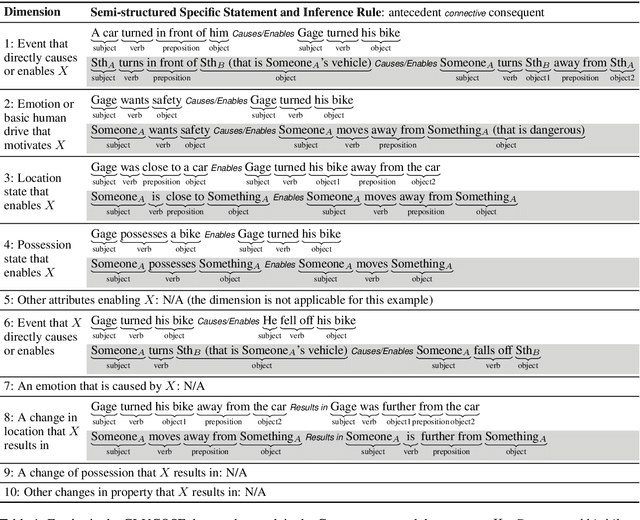

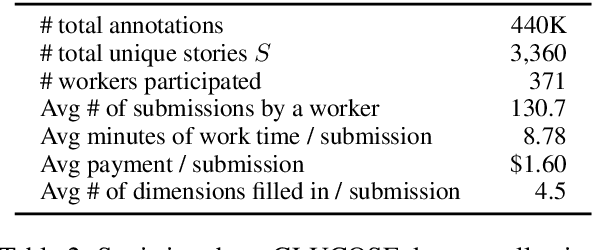

Abstract:When humans read or listen, they make implicit commonsense inferences that frame their understanding of what happened and why. As a step toward AI systems that can build similar mental models, we introduce GLUCOSE, a large-scale dataset of implicit commonsense causal knowledge, encoded as causal mini-theories about the world, each grounded in a narrative context. To construct GLUCOSE, we drew on cognitive psychology to identify ten dimensions of causal explanation, focusing on events, states, motivations, and emotions. Each GLUCOSE entry includes a story-specific causal statement paired with an inference rule generalized from the statement. This paper details two concrete contributions: First, we present our platform for effectively crowdsourcing GLUCOSE data at scale, which uses semi-structured templates to elicit causal explanations. Using this platform, we collected 440K specific statements and general rules that capture implicit commonsense knowledge about everyday situations. Second, we show that existing knowledge resources and pretrained language models do not include or readily predict GLUCOSE's rich inferential content. However, when state-of-the-art neural models are trained on this knowledge, they can start to make commonsense inferences on unseen stories that match humans' mental models.
 Add to Chrome
Add to Chrome Add to Firefox
Add to Firefox Add to Edge
Add to Edge